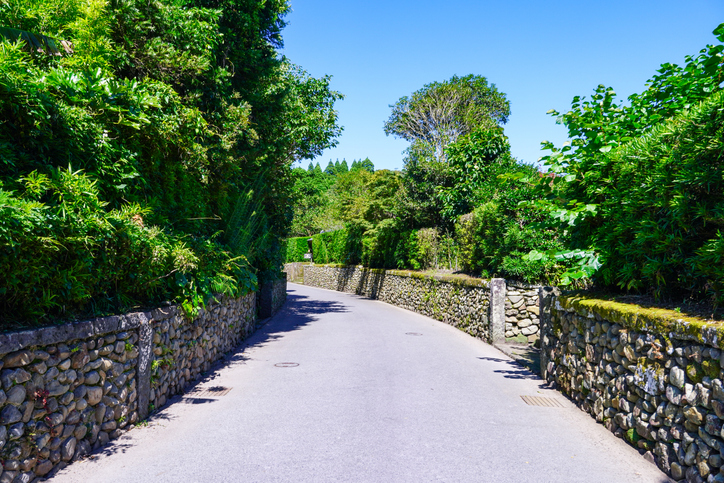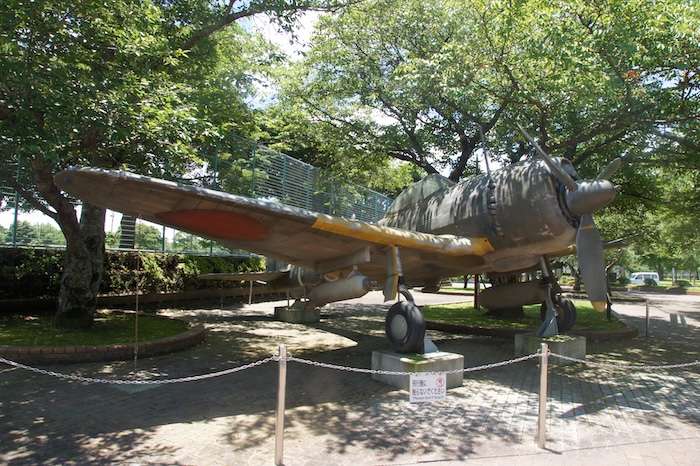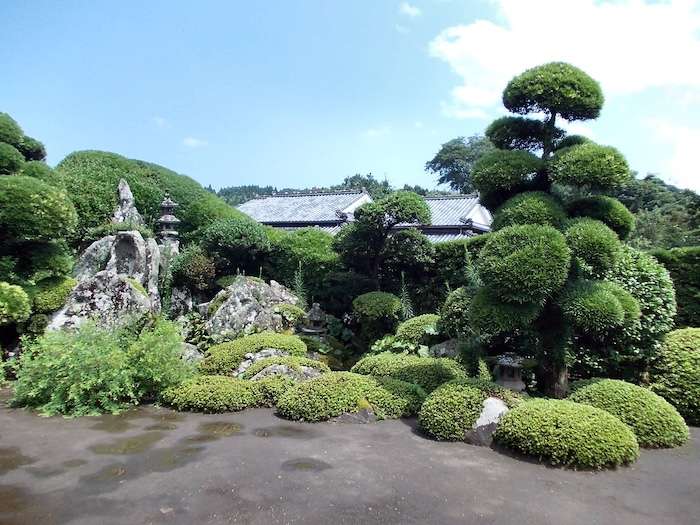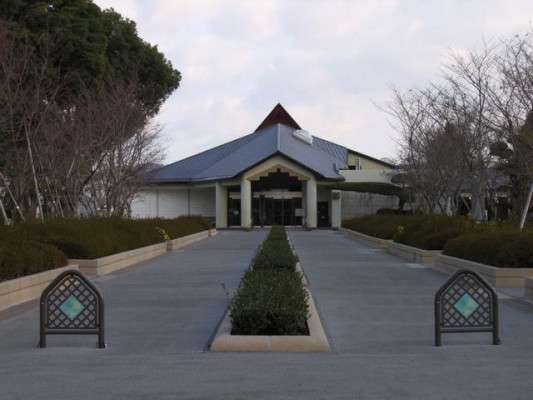
April 26, 2025
Chiran, Kagoshima Travel Guide
Home to Kyoto-style gardens and the Peace Museum for kamikaze, Chiran offers a healthy dose of history and culture. Stephen Mansfield takes a walk.
By Metropolis
Chiran Travel Guide was originally published on metropolis.co.jp in June 2003. Updated April 2025.
From above, the Satsuma Peninsula in southern Kyushu appears as a patchwork of emerald peaks, old tiled rooftops and winding lanes dotted with tea fields and historic hot spring inns. Nestled in this peaceful landscape is the town of Chiran, where history and beauty coexist in a way few places can match. This Chiran travel guide takes you through its somber wartime past and its quietly powerful samurai gardens.
Wartime Echoes at the Peace Museum
Chiran is most widely known for the Chiran Peace Museum for Kamikaze Pilots, built on the site of a former airfield used during WWII. Originally established as a training base in 1942, Chiran became a launch point for tokko-tai (Special Attack Forces, or more widely known as Kamikaze) missions starting in April 1945. Many young pilots flew one-way sorties from here during the final months of the war.
The museum grounds include the solemn Toko Kannon statue, dedicated to the 1,036 pilots who departed from Chiran. Inside the statue, wooden plaques bearing their names are sealed in remembrance. Nearby, a motherly figure looks up toward the skies, evoking the family left behind.
A visit to the Peace Hall, completed in 1975, offers even more intimate insights. Inside are letters, uniforms and photos capturing the final hours of these pilots’ short but significant lives. One poignant image shows a teenager being given a puppy for comfort before his departure. The displays strike a tone that is more reflective than graphic, raising deep moral questions while also humanizing the individuals behind the history. Small, camouflaged barracks behind the museum recreate the room where pilots spent their final night: simple tatami mats, military blankets and a haunting stillness.
While this part of the Chiran travel guide may not appeal to all, it’s a powerful place of reflection for those interested in Japan’s WWII history.

A Stroll Through Chiran’s Samurai District
After the heavy atmosphere of the museum, a visit to the Chiran Samurai Residence Gardens offers a welcome return to nature, beauty and quiet introspection. These Edo-period gardens, seven in total, are some of the best-preserved examples of small-scale Japanese landscaping and provide a glimpse into the aesthetic values of the region’s former warrior class.
These gardens reflect influences from Kyoto, where Chiran’s elite once traveled to absorb the finest in Japanese culture. Back home, they recreated those gardens to suit the Satsuma landscape—each one a work of art using borrowed scenery, miniature hill-and-pond layouts and dry rock arrangements.

Some highlights in this part of our Chiran travel guide include:
- Keiichiro Saigo Garden: Appears modest at first glance. Its subtly angled stones and layered trees come to life the more you look.
- Katsumi Hirayama Garden: With ancient stone lanterns and Buddhist relics, this space feels like a quiet temple.
- Ryoichi Hirayama Garden: Unique for its absence of rocks. It instead uses azalea hedges and color gradation to mimic the surrounding hills.
The samurai gardens were not just aesthetic but defensive. Winding lanes, thick hedges and stone water basins used for rinsing swords point to a time when form and function intertwined. Many of these basins remain today, silent reminders of samurai who returned from battle.
Chiran Travel Guide Visiting Tips and Seasonal Beauty
The best time to visit Chiran’s samurai gardens is late winter to early spring. This is when kantsubaki (winter camellias) bloom along the garden walls. Samurai were said to favor this flower, its sudden drop from the stem said to resemble the fall of a warrior’s head in ritual seppuku.
Although Chiran is growing in popularity, the samurai district remains peaceful and uncrowded. Few guidebooks cover the gardens in detail. This gives visitors a rare chance to form their own impressions without the influence of plaques or pamphlets.
Getting There (2025 Update)
- From Kagoshima City: Buses leave Kagoshima-Chuo Station roughly once an hour starting at 9am. The ride takes about 50 minutes. Get off at the Buke-yashiki-iriguchi stop for the samurai district and gardens.
- Bus Pass: A “My Plan” bus pass (¥2,500) is available from the Kagoshima Kotsu office. It allows unlimited travel in the region for two consecutive days.
- From Ibusuki: Sightseeing buses from Ibusuki also stop in Chiran.
Where to Stay
Most visitors stay in Kagoshima and visit Chiran as a day trip, but if you want to stay nearby:
- Nanshukan (Tel: 099-226-8188): A reliable business hotel near Chuo Park in Kagoshima.
- Nakazono Ryokan (Tel: 099-226-5125): A friendly, affordable guesthouse near the ferry port offering rooms from ¥4,000. The owner is known for local tips and warm hospitality.
Don’t miss our other Japan travel guides:
Ishigaki Island Travel Guide: Beaches, Food and Hidden Gems in Okinawa








